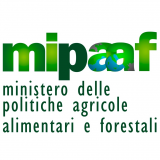
Provolone Valpadana was created in the region between the Lambro and Adda rivers thanks to the reclamation and canalisation of the waters by the Cistercian monks. Its creation was the result of an encounter between the South Italian cheese culture of spun curd and the approach to cheese and dairy found in the Po Valley.
In fact, cheeses known as “provale” were being produced in the south from the Middle Ages onwards, but they were nothing more than aged and smoked caciocavalli. They had a smaller size (weighing a maximum of 2 Kg), and indeed they couldn’t have been otherwise given the scarceness of local milk, which did not allow for the production of large cheeses.
The unification of Italy in 1861 made it possible to overcome the barriers between different areas of the peninsula, and therefore allowed entrepreneurs from the south to settle in the Po Valley who were determined to promote and spread the culture and consumption of spun curd cheeses throughout the whole of the country.
The great abundance of raw ingredients in this area made it possible to produce larger and larger spun cheeses, and so the Provolone Valpadana was created. Fragmentary but documented notices attest to the opening of a cheese factory belonging to the Margiotta brothers in Borgo S. Giacomo in the lower plains of Brescia in 1870, where very large provole cheeses were produced.
From then on, a succession of entrepreneurial southerners moved to the North, to Milan, Cremona, Brescia and Piacenza, to produce spun curd cheese, the consumption of which continued to become more widespread. In the early years of the twentieth century, Gennaro Auricchio came to Padania from San Giuseppe Vesuviano and moved to Cremona, where he became the greatest producer of Provolone Valpadana.
The term “Provolone” first appeared in literature in 1871, in the “Vocabolario di agricoltura di Canevazzi-Mancini” (The Canevazzi-Mancini Vocabulary of Agriculture), and referred to large provola. “Valpadana“ was added to the name ”Provolone" in 1993 as the crowing achievement of a centuries-old tradition that shaped the characteristics for which the cheese became known and appreciated. Finally, on 21 June 1996, the European Union assigned Provolone Valpadana the much-coveted Designated Protection of Origin (DOP) status.
The product
Provolone Valpadana DOP is the spun cheese that comes in the greatest variety of shapes and sizes thanks to the plasticity of the curd.
It is derived from a family of spun curd cheeses that has origins dating back to the Middle Ages. It has a smooth crust and is made from whole cow’s milk with natural acidity from fermentation.
There are two types of Provolone Valpadana DOP: “sweet” Provolone Valpadana “dolce”, which has a delicate flavour due to the use of calf rennet and a maturation period of a minimum of 10 days up to 2/3 months, and “spicy” Provolone Valpadana, which has a stronger flavour due to the use of kid and/or lamb rennet and which is matured for a period of between 3 months and 1 year.
It is a wholly original cheese that stands out against other spun curds because of its large size, which means it can be matured longer without drying out excessively, which would make it a cheese for grating. The cheese has a smooth, thin crust with a golden yellow colour that can sometimes be yellowy brown and which is given a sheen by the paraffin used to cover it. The curd is compact when cut, with a white or straw yellow colour. The sweet variety has small holes and is soft, whereas the spicy alternative is slightly flaky.
To guarantee the authenticity of the Provolone Valpadana DOP, the wheel of cheese must bear a rosette with a yellow cheese on a green background and the number of the dairy producer.
Production
The milk is first heated to the correct processing temperature, then a certain amount of natural whey starter culture taken from the previous batch is added. This culture is rich in selected lactic ferments with the task of acidifying the liquid mass and consequently encouraging the action of the rennet to be added later. The curd is made by curdling the milk with calf, kid or lamb rennet individually or in combination and is then subjected to a spinning process.
The product that comes out of the spinner is already shaped and ready to be collected in special steel moulds at a temperature of around 60 degrees. The cheese obtained from this process is placed in cold water and refrigerated so that it can firm up. The next stage is salting in brine, which lasts for a variable amount of time ranging from a few hours up to thirty days depending on the weight of the cheese.
The two varieties of Provolone Valpadana DOP are mainly distinguished by the type of rennet used in the production process and the duration of the maturing period.
The local area
Provolone Valpadana must be produced in full within the provinces of Cremona, Brescia, Verona, Vicenza, Rovigo, Padua and Piacenza and in part in the provinces of Bergamo, Mantua, Lodi and Trento using raw ingredients farmed in the same provinces. The milk must be transformed into Provolone Valpadana within 60 hours of the first milking. It is currently produced in 11 cheese factories and the Consortium has authorised the facilities of 38 packaging firms.
By Consorzio Tutela Provolone Valpadana with MiPAAF



